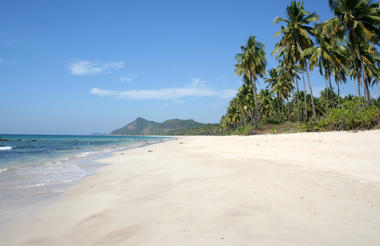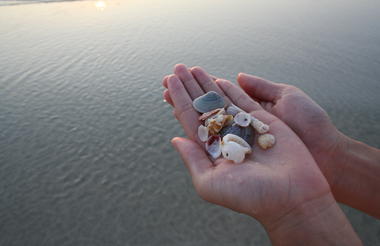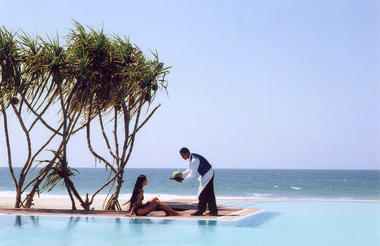Myanmar remains a land cloaked in mystery, where the path less travelled yields memories that linger for a lifetime. From the endless temple plains of Bagan, to the floating gardens and graceful fishermen of Inle Lake, to the pristine stretches of powdery sand along Ngapali, the country is a visual and cultural feast. Vast and diverse, roughly the size of France and England combined, Myanmar is home to more than 130 ethnic groups, each contributing to its extraordinary cultural mosaic. Stretching from snow-capped Himalayan peaks in the north to coral-fringed islands of the Andaman Sea in the south, Myanmar’s landscapes offer dramatic contrasts: fertile valleys, forested hills, serene rivers, and unspoilt coastlines. Ancient pagodas, royal palaces, and traditional villages pepper the terrain, offering a sense of timelessness and discovery. Whether seeking secluded beaches, cultural immersion, jungle adventures, or contemplative retreats among sacred temples, Myanmar presents an unrivalled opportunity to experience Southeast Asia in its purest and most authentic form—a country both enchanting and remarkably untouched.
With a population of over 5 million, Yangon, also known as Rangoon, was the capital of Myanmar up until the end of 2005. It remains the largest city, and is still the pivotal commercial hub of the country today. A visit to this magnificent city will allow you to take in the interesting mix of British, Burmese, Chinese and Indian cultures that mingle there. The skyline is an interesting contrast of decaying colonial architecture and modern high-rises, dominated by the golden glow of the Shwedagon Pagoda, an exquisite Buddhist temple that draws pilgrims from across the globe. Your time here would be well spent visiting the impressive array of temples, museums and markets that the city has to offer.
History Yangon in brief
European countries in a race to control trade routes had established trading posts in across South East Asia. East India Trading company controlled by the British had extended its operations to the Burmese coast and where trading with the Burmese kings. Three Anglo-Burmese wars flared up and in the second Anglo-Burmese war 1852 the British took over Southern Burma and made Rangoon its capital. The old name of Rangoon was Dagon. After third war in 1885 and ousting king Thibaw in Mandalay where the capital was located Rangoon became the capital for the whole country of Burma. Dr William Montgomerie sketched the new plan for the city and Lt Alexander Fraser from the Bengal Engineers implemented. Many architects were employed to fill in the city plan with schools, hospitals, parks, banks, shops and administrative buildings.
Fast forward… the colonial times are long gone, but in Yangon they have left behind a rich architectural heritage, of a type which many other capital cities of the region has been lost to “progress”. Yangon has the largest number of colonial buildings in the whole of Southeast Asia. Many colonial-era buildings that today host state institutions and authorities, such as government banks and the Port Authority, as well as the High Court and City Hall, are clustered in the downtown area. The Strand Hotel is there, too, built by the famous Sarkies Brothers in 1901, and today a sumptuous reminder of a bygone era.
Unlike many of its regional counterparts Yangon is also still first and foremost a green city, despite the battering it received from a cyclone in 2008. In the tranquil settings of Kandawgyi Lake and Inya Lake, and along its wide avenues, Yangon can still boast countless old trees and vegetation. A panoramic view of the city reveals its beauty – with the awe-inspiring Shwedagon Pagoda in its golden hue on one side, on a low hill, and on the other side the ancient Sule Pagoda and its encircling shops in the downtown area.



Resting on the banks of the mighty Irrawaddy River, Old Bagan is both a wondrous UNESCO World Heritage Site and the core of the Bagan Archeological Zone. This charming destination is home to lovely museums, several magnificent temples, enticing shops, and mouth-watering cuisine. Must-see attractions include the famous Shwesandaw Pagoda; the exquisite red-brick facade of the Htilominlo Temple; the interesting exhibitions at the Bagan Archaeological Museum; and the panoramic views from the Atwin Zigon Pagoda. Enjoy a leisurely round of golf at the spectacular 18-hole Bagan Nyaung Oo Golf Club, or wander down to the waterfront and admire the spectacular views and bustling riverside trade.



Hautingly picturesque, Inle Lake is one of Myanmar’s most iconic destinations in the mountains of Shan State, where floating gardens made of woven water hyacinth reeds, silt and bamboo provide a backdrop for graceful, one-legged boat rowers. Inle Lake is perfect for leisurely boat excursions, walking explorations or longer trekking trips through the villages of the Shan, Pa-O, Intha and Danu ethnic minority groups.
Inle Lake lies at an altitude of nearly 3,000 feet, fringed by tall grasses and reed beds, ringed by well-forested hills and, according to the season, may often be wreathed in mist. The main body of the lake is some 13 miles in length with calm, crystal clear waters. Its shores and floating islands are home to villages built on stilts, whose inhabitants are the hardworking and resourceful Intha people. These are the famous leg rowers, skillfully navigating the lake by rowing in a standing position – one leg wrapped around an oar pivoted on their hip, another leg balancing on the prow of their boat, and body poised to plunge a fish trap into the waters beneath. In addition to their fishing skills, the Intha are traditional market gardeners, cultivating flowers and vegetables on a floating tangle of water hyacinth and silt anchored to the lake bed by bamboo.
Moreover, Inle Lake is an official bird sanctuary, rich in wildlife. Its main body is reached along a narrow waterway from the northernmost lakeside town of Nyaungshwe. The boat ride passes waterside temples and villages, and in the less populated stretches, herons stand in solitary contemplation at the water’s edge while cormorants dive for their prey. In the principal part of the lake, there are many islands to visit. Away from these developed areas, a leisurely canoe paddle through channels branching from the lake brings a closer view of the local life, with fascinating encounters and friendly villagers. Heading south from the main body of the lake the traveller passes through another long and narrow waterway to reach the 17th century ruins of Samkar, where Shan and Pa-O villagers now live side by side, and the ancient Tharkong Pagoda, which legend tells was founded by an early Burmese king. The region offers ample trekking opportunities and extended walks to keep the active traveller busy. Trekking out into the Shan hills east of Nyaungshwe, at the lake’s northern end will lead to Pa-O villages and beautiful views of the lake along the way. Extended walks through rice paddies pass many Shan stupa ruins that lie dotted around the countryside.



Myanmars tropical paradise and premiere beach resort. Ngapali Beach is a tropical paradise of pristine sand, clear blue waters and groves of picturesque coconut palms. Over 10km of white sand beach runs along the Bay of Bengal, with a smattering of only a dozen or so resorts to create a sense of seclusion and hidden discovery. The limited development and small number of visitors means the beach never feels crowded, a dream come true for lovers of the sun, sea and sand. Besides the usual sunbathing and swimming, leisure activities include snorkeling, sailing, scenic walks and bike trips.
Myanmars tropical paradise and premiere beach resort. Far away from tourist crowds, Ngapali Beach is still a truly undiscovered paradise. The long beach is dotted with charming boutique style resorts built in local materials, the architecture blending harmoniously with the natural surroundings. There are no high rises, no noisy roads, no booming discotheques, no jetskis and no packed rows of oiled bodies baking in the sun. The stretch of white sand, natural beauty of the blue sea, swaying palm trees and quiet privacy are guaranteed ingredients of an exquisite beach holiday.
Active visitors can choose from visiting the colorful local market in Thandwe (Sandoway), biking along the coast to surrounding villages, or hiring a boat to go fishing or sailing against the coastal backdrop of the Rakhine hills. An early morning’s bicycle ride to the nearby fishing villages – where hoards of small fishing boats return home from the night’s catch with baskets of fish ready for the women to spread on the beach for drying in the sun – will provide an insight into the local life and ample opportunities for photography. And as the sun drops below the horizon, out over the waters, gorgeous sunsets are a pleasure to watch with a cocktail or two back at the hotel’s intimate beach bar. There also are several local restaurants within walking distance where local dishes are served, in particular fresh fish and sea food. Here, visitors will be able to enjoy some of the largest, most flavorful and most affordable lobster, crab, giant prawns and a variety of ocean fish in all of Asia. All hotels offer a choice of restaurants serving Western and Asian cuisine as well. In short, all the creature comforts of home are on offer, but in an environment of tranquility rarely encountered in the modern world.



As previously described







